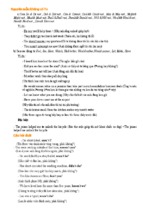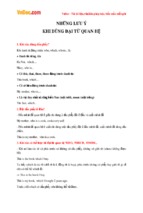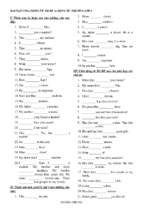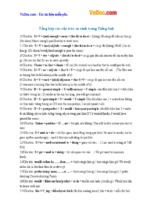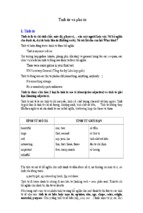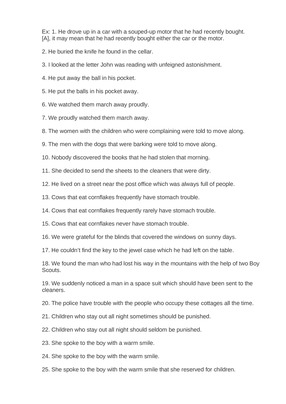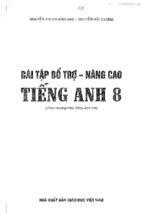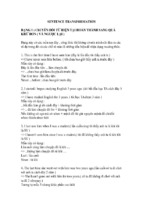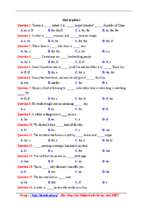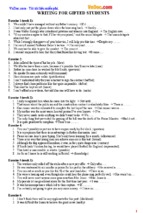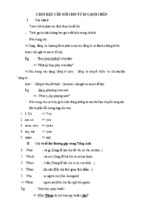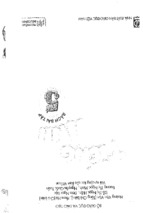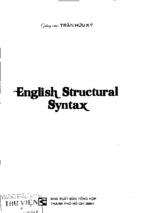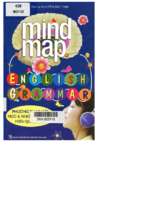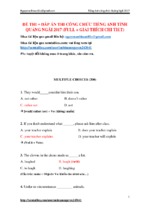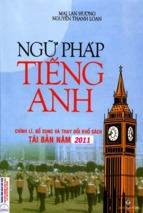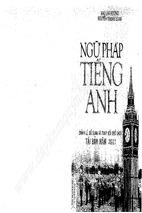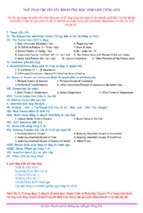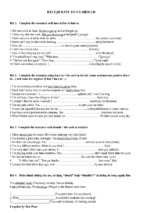Academic
Writing
A practical guide for students
Stephen Bailey
Text © Stephen Bailey 2003
Original illustrations © Nelson Thornes Ltd 2003
The right of Stephen Bailey to be identified as author of this work has been asserted
by him in accordance with the Copyright, Designs and Patents Act 1988.
All rights reserved. No part of this publication may be reproduced or transmitted in
any form or by any means, electronic or mechanical, including photocopy, recording
or any information storage and retrieval system, without permission in writing from the
publisher or under licence from the Copyright Licensing Agency Limited, of 90
Tottenham Court Road, London W1T 4LP.
Any person who commits any unauthorised act in relation to this publication may be
liable to criminal prosecution and civil claims for damages.
First published in 2003 by Nelson Thornes Ltd
Simultaneously published in the USA and Canada
by RoutledgeFalmer
29 West 35th Street, New York, NY 10001
This edition published in the Taylor & Francis e-Library, 2004.
RoutledgeFalmer is an imprint of the Taylor & Francis Group
A catalogue record for this book is available from the British Library.
ISBN 0-203-46412-5 Master e-book ISBN
ISBN 0-203-47059-1 (Adobe eReader Format)
ISBN 0 7487 6838 6 (Print Edition)
Illustrations by Oxford Designers and Illustrators
Page make-up by Northern Phototypesetting Co. Ltd, Bolton
Acknowledgements
I would like to thank the staff and students at the Centre for English
Language Education (CELE) at The University of Nottingham who have
piloted these materials, and in particular my colleagues Ann Smith, Janet
Sanders and Sandra Haywood for their specific contributions in unravelling
some of the finer points of academic language. My wife, Rene, deserves my
warmest thanks for her unfailing support, advice and encouragement over
the whole period of the project’s development.
The author and publishers wish to thank the following for permission to
reproduce photographs and other copyright material in this book.
Corel 76 (NT) p 29; Corel 102 (NT) p 90; Corel 392 (NT) p 118; Corel 631 (NT)
p33; Corel 786 (NT) p 19; Corel 787 (NT) p 41; Joe Cornish/Digital Vision LL
(NT) p 38; Illustrated London News V1 (NT) p 56; Illustrated London News
V2 (NT) p 4; Photodisc 31 (NT) p 78 ; Photodisc 41 (NT) p 46; Photodisc 46
(NT) pp 56, 80; Photodisc 71 (NT) p 8; Photodisc 72 (NT) p 17; Stockbyte 31
(NT) p 60.
Every effort has been made to contact copyright holders and the publishers
apologise to anyone whose rights have been inadvertently overlooked and
will be happy to recitfy any errors or omissions.
Teachers and lecturers using this book with a class will be able to find
extra teaching material within the teacher resources section of the
RoutledgeFalmer website at http://www.routledgefalmer.com/
Contents
Introduction
vi
Part 1:
The Writing Process
1
Student introduction
1
1. Background to writing
2. Developing plans from titles
Writing Foundations
3.
4.
5.
6.
7.
8.
9.
Evaluating a text
Understanding purpose and register
Selecting key points
Note-making
Paraphrasing
Summary writing
Combining sources
Reading and Note-Making
9
12
15
18
21
23
26
Planning a text
Organising paragraphs
Organising the main body
Introductions
Conclusions
Re-reading and re-writing
Proof-reading
Writing Stages
29
32
36
39
42
45
48
10.
11.
12.
13.
14.
15.
16.
3
6
Part 2:
Elements of Writing
51
Student introduction
51
1.
2.
3.
4.
5.
6.
7.
8.
9.
10.
11.
12.
Cause and effect
Cohesion
Comparisons
Definitions
Discussion
Examples
Generalisations
Numbers
References and quotations
Style
Synonyms
Visual information
Flooding results from heavy rain
The former/the latter
His work is more interesting than hers
An assignment is a task given to students …
Benefits and drawbacks
Many departments, for instance medicine,
Computers are useful machines
The figures in the report …
As Donner (1997) pointed out
It is generally agreed that …
Interpretation/explanation
Graphs, charts and tables
53
55
57
60
62
65
67
70
73
76
79
81
vi
Contents
Part 3:
Accuracy in Writing
85
Student introduction
85
1.
2.
3.
4.
5.
6.
7.
8.
9.
10.
11.
12.
13.
14.
15.
16.
17.
18.
19.
20.
Abbreviations
Adverbs
Articles
Caution
Conjunctions
Formality in verbs
Modal verbs
Nationality language
Nouns and adjectives
Nouns: countable and uncountable
Passives
Prefixes and suffixes
Prepositions
Prepositions after verbs
Punctuation
Referring verbs
Relative pronouns
Singular/ plural
Tenses
Time words and phrases
i.e./WTO
currently/eventually
a/an/the
Poor education tends to lead to crime
furthermore/however
speed up/accelerate
may/could/should
Spain/Spanish
efficiency/efficient
business/businesses
The gases were discovered
undergraduate/graduate
The purpose of this paper …
concentrate on
‘?:
Martins (1975) claimed that …
that/which
The team is/are
Few scientists dispute/have disputed
since the nineteenth century
87
89
91
93
95
98
100
102
104
106
108
110
113
115
117
119
121
123
125
128
Part 4:
Writing Models
131
Student introduction
131
1.
2.
3.
4.
Formal letters
CVs
Designing and reporting surveys
Comparison essay
5.
Discursive essay
Letter layout and letters of application
Layout and phrasing of a curriculum vitae
Survey reports and questionnaire design
A comparison of classroom learning with
internet-based teaching
Education is the most important factor in
national development – Discuss
133
135
137
139
141
Writing Tests
143
Answers
146
Sources
191
Introduction
Academic Writing is designed for anybody who is studying (or planning to
study) at English-medium colleges and universities and has to write essays
and other assignments for exams or coursework. International students
especially find the written demands of their courses extremely challenging.
On top of the complexity of the vocabulary of academic English they have to
learn a series of conventions in style, referencing and organisation.
Academic Writing is a flexible course that allows students to work either with a
teacher or by themselves, to practise those areas which are most important for
their studies. Many students find that they have very limited time to prepare
for their courses, and that writing is only one of several skills they need to
master. The structure of the book has been made as simple as possible to allow
users to find what they want quickly.
The course is organised to provide maximum hands-on practice for students.
Skills are developed from writing at the paragraph level, through organising
the various sections of an essay, to discussing statistics and describing charts.
This book is divided into four parts:
1) The Writing Process guides students from the initial stage of
understanding an essay title, through reading and note-making, to the
organisation of an essay and the final stage of proof-reading.
2) Elements of Writing deals with the key skills that are needed for all types
of assignments, such as making definitions and giving references, and is
organised alphabetically.
3) Accuracy in Writing gives remedial practice in those areas that students
tend to find most confusing, such as definite articles and relative
pronouns, again in alphabetical order.
4) Writing Models gives examples of the types of writing that students
commonly need, including letters and survey reports.
All units are cross-referenced and a comprehensive key is provided at the end.
There is also a Writing Tests section for assessing level and progress.
Although every effort has been made to make Academic Writing as useful and
accurate as possible, if students or teachers have any comments, criticisms or
suggestions I would be very pleased to hear from them.
Stephen Bailey
[email protected]
Instructions to students are printed like this:
Complete the sentences with suitable words from the box below.
Cross-references in margins look like this:
cross reference
2.11 Synonyms
This means: refer to the unit on synonyms in Part 2 (Unit 11).
1.
The Writing Process
Student Introduction
Most academic courses in English-medium colleges and universities use
essays to assess students’ work, both as coursework, for which a deadline
one or two months ahead may be given, and in exams, when an essay
often has to be completed in an hour.
The process of writing essays for coursework assignments can be shown
in a flowchart:
Understand essay title/requirements
Assess reading texts – choose most appropriate
Select relevant areas of texts
Keep record for
references
Make notes on relevant areas,
using paraphrasing & summarising skills
Combine a variety
of sources where
necessary
Select appropriate structure for essay/plan
Organise & write main body
Organise & write introduction
Organise & write conclusion
Critically read & re-write where necessary
Final proof-reading
Part 1, The Writing Process, examines each of these stages in turn. If
students are concerned only with preparing for exam writing they could
omit the reading and note-making stages, but if they have sufficient time
they should work through every unit, preferably in the order given, for
each stage builds on the previous one.
Although it is essential to understand the basic writing process, at the
same time it will be useful to be aware of the elements which contribute
to good academic writing. When practising note-making, for example, it is
helpful to be aware of the conventions of referencing, and so students
should use the cross-reference boxes to look at the unit on References and
Quotations in Part 2.
Writing Foundations
1.
3
Background to Writing
Some of the terms used to describe different types of writing assignments can
be confusing. In addition, students need to be clear about the basic components
of written texts. This unit provides an introduction to these topics.
1. Students may have to produce various types of written work as part of
their courses.
Complete the table to show the main purpose of the following, and
their usual approximate length.
Type
Purpose
Length
letter
for formal and informal
communication
usually less than 500
words
notes
report
project
essay
thesis/dissertation
article/paper
2. Organisation of texts.
a) Explain the following terms in italic:
Shorter texts, e.g. essays, are normally organised in the form:
Introduction > Main Body > Conclusion
Longer texts, e.g. dissertations and articles, may include (depending on
subject area):
Abstract > Contents > Introduction > Main Body > Case Study >
Discussion > Findings > Conclusion > Acknowledgements >
Bibliography/References > Appendices
Books may also contain:
Dedication > Foreword > Preface > Index
b) Match the definitions below to one of the terms in (2a).
i) Short summary (100–200 words) of the writer’s purpose and
findings
(. . . . . . .)
ii) Section where various people who assisted the writer are
thanked
(. . . . . . .)
iii) Final part where extra data, too detailed for the main text, are
stored
(. . . . . . .)
iv) List of all the books that the writer has consulted
(. . . . . . .)
v) Section looking at a particular example relevant to the
main topic
(. . . . . . .)
vi) Introductory part of book which may give the writer’s
motives
(. . . . . . .)
vii) Alphabetical list of all topics in the text
(. . . . . . .)
4
Part 1: The Writing Process
cross reference
3.1
2.9
Abbreviations
References and
Quotations
3.15 Punctuation
3. Other text features.
Abbreviations are often used to save space:
Call Centres (CCs) feature prominently in the technology mix.
Italic is used to show titles and words from other languages:
Where once the titles of Armchair Theatre and The Wednesday Play celebrated …
Squatter housing (called gecekondu in Turkish) …
Footnotes are used to indicate references at the bottom of the page:
In respect of Singapore the consensus is that the government has made a difference.3
Endnotes are given to show references at the end of the article or chapter:
The market for masonry construction may be divided into housing and non-housing sectors [1]
Quotation marks are used to draw attention to a phrase, perhaps because
it is being used in an unusual or new way:
The research shows that the ‘pains of imprisonment’ for women are…
4. All types of writing consist of a number of key elements.
Label the items in the text.
a) . . . . . . . . . . . . . . . . . . . THE ORIGINS OF THE INDUSTRIAL REVOLUTION
b) . . . . . . . . . . . . . . . . . . . Introduction
c) . . . . . . . . . . . . . . . . . . . It is generally agreed that the Industrial Revolution began
in Britain during the eighteenth century, with significant
developments in the iron, steel and textile industries. But
it is less clear what caused this sudden increase in
production in key areas; different writers have examined
the availability of capital, the growth of urban
populations and the political and
Writing Foundations
5
d) . . . . . . . . . . . . . . . . . . . religious climate. All of these may have played a part, but first
it is necessary to consider the precise nature of what is meant by
‘Industrial Revolution’.
e) . . . . . . . . . . . . . . . . . . . Industry had existed for thousands of years prior to the
eighteenth century, but before this time society as a whole
remained agricultural. With the arrival of the ironworks and
cotton mills whole towns were dominated by industrial activity.
At the same time, agriculture itself went through significant
changes which produced more food for the growing urban
population.
cross reference
1.11 Organising Paragraphs
1.12 Organising the Main
Body
5. Why are all texts divided into paragraphs? How long are paragraphs?
Read the following text, from the introduction to an essay, and divide
it into a suitable number of paragraphs.
INVESTMENT
Most people want to invest for the future, to cover unexpected financial difficulties and provide
them with security. Different people, however, tend to have different requirements, so that a 25year-old just leaving university would be investing for the long-term, whereas a 60-year-old who
had just retired would probably invest for income. Despite these differences, certain principles
apply in most cases. The first issue to consider is risk. In general, the greater the degree of risk
in investment, the higher the return. Shares, for example, which can quickly rise or fall in value,
typically have a higher yield than bonds, which offer good security but pay only about 5%.
Therefore all investors must decide how much risk is appropriate in their particular situation.
Diversification must also be considered in an investment strategy. Wise investors usually seek
to spread their investments across a variety of geographical and business sectors. As accurate
predictions of the future are almost impossible, it is best to have as many options as possible.
A further consideration is investor involvement. Some investors opt for a high degree of
involvement and want to buy and sell regularly, constantly watching the markets. Others want to
invest and then forget about it. Personal involvement can be time-consuming and worrying, and
many prefer to leave the management of their portfolios to professional fund managers.
6
Part 1: The Writing Process
2.
Developing Plans from Titles
Most written work begins with a title, and students must be quite clear what
question the title is asking before starting to plan the essay and read around the
topic. This unit deals with analysing titles and making basic plans.
1. When preparing to write an essay, it is essential to identify the main
requirements of the title. You must be clear about what areas your
teacher wants you to cover. This will then determine the organisation of
the essay. For example:
Academic qualifications are of little practical benefit in the real world – Discuss.
Here the key word is discuss. Discussing involves examining the benefits
and drawbacks of something.
Underline the key words in the following titles and consider what
they are asking you to do.
a) Define Information Technology (IT) and outline its main applications in medicine.
b) Compare and contrast the appeal process in the legal systems of Britain and the USA.
c) Evaluate the effect of mergers in the motor industry in the last ten years.
d) Trace the development of primary education in Britain. Illustrate some of the issues
currently facing this sector.
Note that most of the titles above have two terms in the title. You must
decide how much importance to give to each section of the essay (e.g. title
(a) might demand 10% for the definition and 90% for the outline).
2. The following terms are also commonly used in essay titles.
Match the terms to the definitions on the right.
Analyse
Give a clear and simple account
Describe
Make a proposal and support it
Examine
Deal with a complex subject by giving the main points
State
Divide into sections and discuss each critically
Suggest
Give a detailed account
Summarise
Look at the various parts and their relationships
cross reference
1.10 Planning a Text
2.5 Discussion
3. Almost all essays, reports and articles have the same basic pattern of
organisation:
Introduction
Main body
Conclusion
The structure of the main body depends on what the title is asking you to
do. In the case of a discuss type essay, the main body is often divided into
two parts, one looking at the advantages of the topic and the other
looking at the disadvantages.
A plan for the first example might look like this:
Writing Foundations
Academic qualifications are of little practical benefit in the real world – Discuss.
Introduction
variety of different qualifications
different methods of assessment
Benefits
international standards for professions, e.g. doctors
students have chance to study latest theories
qualifications lead to better salaries and promotion
Drawbacks
many successful people don’t have qualifications
many qualified people don’t have jobs
Conclusion
qualifications are useful but not guarantees of success
4. Write a plan for one of the titles in (1).
title
introduction
main body
conclusion
5. Teachers often complain that students write essays that do not answer
the question set.
Consider the following titles and decide which sections should be
included in each essay.
a) Describe the growth of the European Union since 1975 and suggest its
likely form by 2010.
A short account of European history 1900–2000
An analysis of candidates for membership before 2010
A discussion of the current economic situation in Europe
An outline of the enlargement of the EU between 1975 and now
b) Summarise the arguments in favour of privatisation and evaluate its
record in Britain.
A case study of electricity privatisation
An analysis of less successful privatisations
A study of major privatisations in the UK
A discussion of the benefits achieved by privatisation
c) To what extent is tuberculosis (TB) a disease of poverty?
A definition of TB
7
8
Part 1: The Writing Process
A report on the spread of TB worldwide
A case study showing how TB relates to social class
A discussion of new methods of treating the disease
d) Nursery education is better for children than staying at home with
mother – Discuss.
A study of the growth of nurseries since 1995
A report on the development of children who remain at home until
five
A discussion comparing speaking ability in the two groups of
children
An outline of the increase of women in the labour market since 1960
e) Compare studying in a library with using the internet. Will the former
become redundant?
The benefits of using books
The drawbacks of internet sources
Predicted IT developments in the next 15 years
An outline of developments in library services since 1945
6. Underline the key terms in the following titles and decide what you are
being asked to do.
Example:
Relate the development of railways to the rise of nineteenth-century
European nationalism.
Relate means to link one thing to another. The title is asking for links to be
made between the growth of railways in Europe in the nineteenth
century and the political philosophy of nationalism. The writer must
decide if there was a connection or not.
a) Identify the main causes of rural poverty in China.
b) Calculate the likely change in coffee consumption that would result
from a 10% fall in the price of coffee beans.
c) Classify the desert regions of Asia and suggest possible approaches to
halting their spread.
Reading and Note-Making
3.
9
Evaluating a Text
Having understood the title and made an outline plan, your next step is probably
to read around the subject. Although you may be given a reading list, it is still
vital to be able to assess the usefulness of journal articles and books. Time spent
learning these skills will be repaid by saving you from using unreliable or irrelevant
materials.
1. When reading a text, it is important to ask yourself questions about the
value of the text. Is this text fact or opinion? If fact, is it true? If opinion,
do I agree? Can this writer be trusted? These questions can be shown in
a diagram:
Start here
FACT OR
OPINION?
FACT
TRUE OR
FALSE?
TRUE
FALSE
?
OPINION
AGREE OR
DISAGREE?
DISAGREE
TRUSTWORTHY
AND USEFUL
AGREE
2. Read the following sentences and decide first if they are fact or opinion.
Then decide if the factual sentences are true, and if you agree with the
opinions in the other sentences.
Opinion
or fact?
a) The USA has the biggest economy in the world
b) Shakespeare wrote textbooks
c) Shakespeare was a great writer
d) Smoking can be dangerous
e) Too many people (32%) smoke in Britain
f) 95% of criminals cannot read
g) Poor education causes 75% of crime
Agree or
disagree?
True or
false?
10
Part 1: The Writing Process
3. It can be seen that even short sentences can contain a mixture of fact and
opinion. Most longer texts, of course, consist of both.
Read the following and underline facts ( ____ ) and opinions (
).
a) Britain has one of the highest crime rates in the world.
b) A robbery takes place every five seconds. A car is stolen every minute. Clearly,
criminals are not afraid of the police.
c) Even if they are caught, few criminals ever appear in court.
d) Most of those who are found guilty are let off with a tiny fine.
e) To restore law and order, we need many more police and much tougher punishments.
4. The previous sentences can be evaluated as follows:
a) Fact, but only partly true. Britain does not have one of the highest
overall crime rates in the world. For some crimes, e.g. car crime, the
rate is high, but other countries, e.g. South Africa and the USA, have
much higher rates of violent crime.
b) These facts may or may not be true, but it is not clear from them that
criminals are unafraid of the police.
c) Fact, but not true. A significant number of those arrested are charged
and later prosecuted.
d) This statement is vague. A fine is not letting off. What is meant by tiny?
e) This is a half-truth. More police would probably help reduce crime, but
it is not clear if stronger punishments would have that result.
From this it can be seen that even if the facts are correct, the opinions that
are expressed may not be reliable. The evaluation above would suggest
that the writer of the original text could not be trusted, and it would be
better to look for another source.
5. Evaluate the following passages in a similar way. First underline
facts and opinion, then decide if the text as a whole is trustworthy.
a) Every year large numbers of students travel abroad to study at university. Most of them
spend thousands of pounds on their degree courses. The cost of travel and
accommodation adds significantly to their expenses. But they could save a lot of
money by studying their courses online, using the internet and email. Increasing
numbers of universities are offering tuition by the internet, and this has many
advantages for students. In the future most students are likely to stay at home and
study in front of a computer.
b) London is an ideal city for young students. Britain’s lively capital, with a population of
two million, is the perfect place to live and study. Cheap, comfortable accommodation
is always available, and transport is provided by the clean and reliable underground
system. Another advantage is the friendly citizens, who are well-known for their custom
of stopping to chat with strangers. Overall, London is probably the best place in the
world to study English.
Reading and Note-Making
c) A leading academic has claimed that European unemployment has been made worse
by high rates of home ownership. He argues that the growing trend towards owneroccupation is the best explanation for the high rates of unemployment in Europe. This,
he argues, is because home owning makes people more reluctant to move if they lose
their job. His research suggests that a strong private rented sector is the key to low
unemployment. For example, Ireland, where only 9% rent their homes, has an
unemployment rate of 8%. At the other extreme, Switzerland has a rental rate of 60%,
but only 3% are unemployed.
d) Global warming affects most people in the world, especially those living in low-lying
areas near the sea. It has been predicted that the melting of polar ice may cause the
sea to rise by as much as twelve metres by 2050. This would cause flooding in many
major coastal cities, such as Tokyo. It has been suggested that the best solution to this
problem may be for mankind to become amphibious, like frogs. It is argued that life
was originally found in the sea, and so it would merely be a return to our original
habitat.
e) There is shocking new evidence of the effects of heavy alcohol consumption by young
people. In Britain in 2000 nearly 800 people under 44 died from cirrhosis of the liver, a
condition which is mainly caused by excess drinking. This is over four times higher
than the number in 1970. As a result, the government is studying the possibility of
compulsory health warnings on alcohol advertising. The growing problem seems to be
due to ‘binge’ drinking among the young, when drinkers deliberately set out to get
drunk.
11

